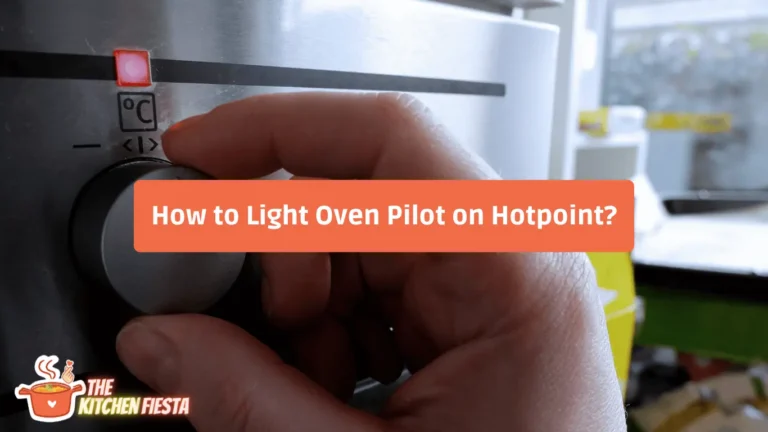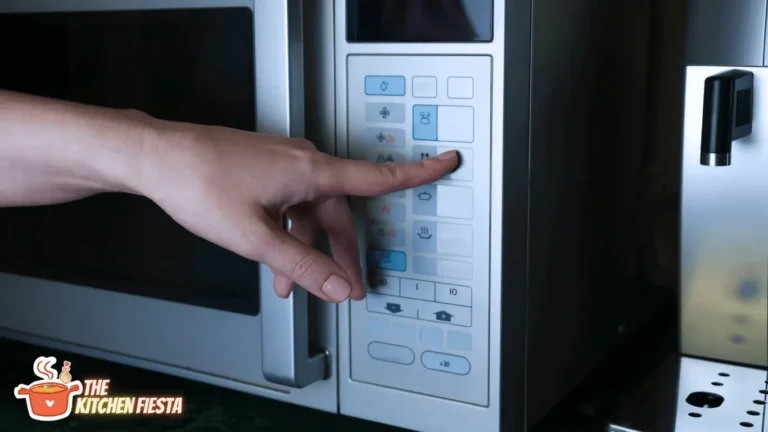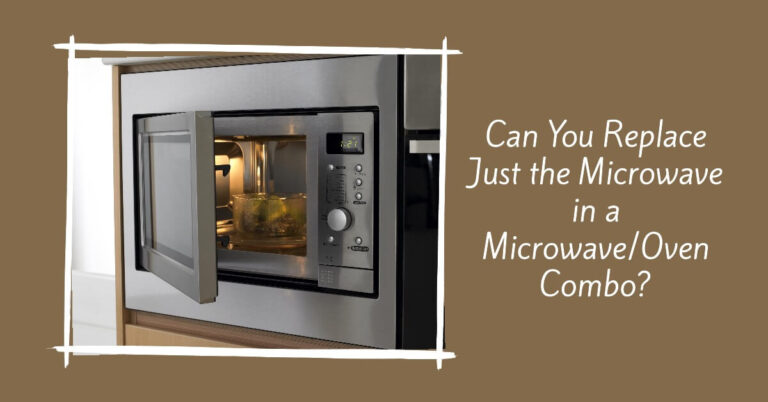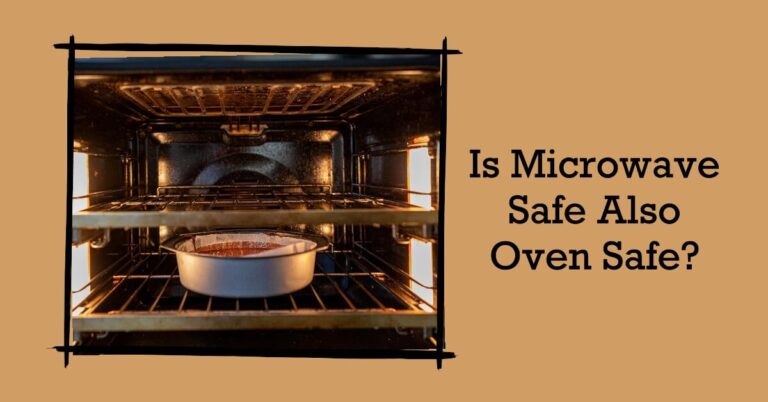How and Where to Properly Recycle Your Old Microwave Oven?
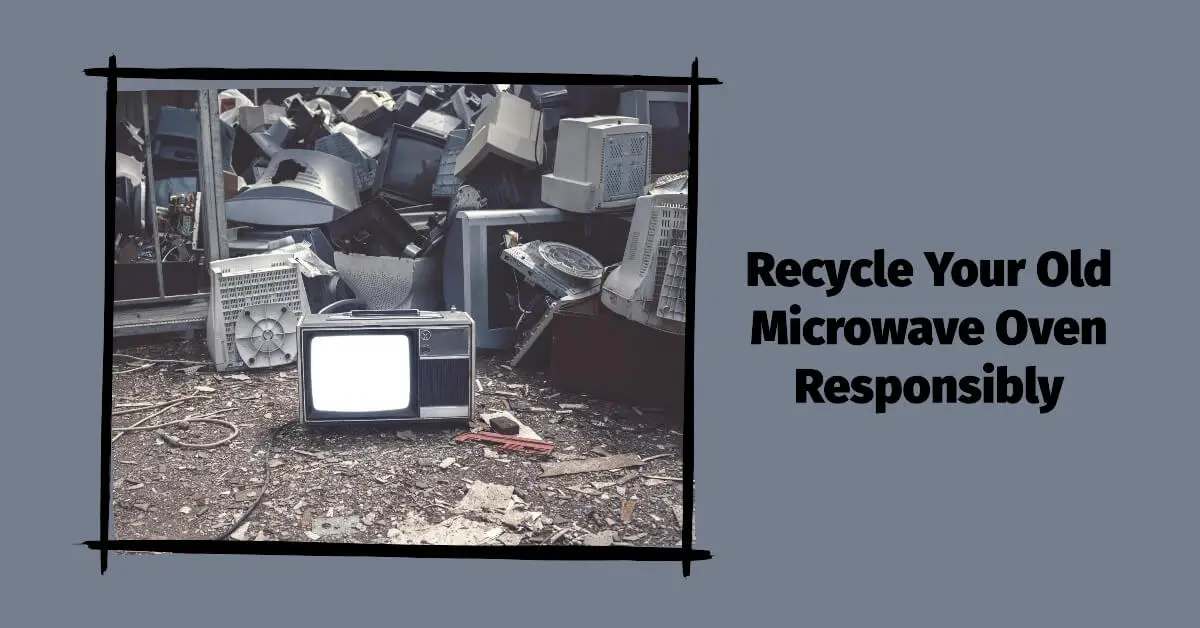
Have you finally decided to recycle that old, broken microwave taking up space in your kitchen? Getting rid of old electronics and appliances like microwaves requires more care than just tossing them in the trash. Microwave ovens contain materials that could be hazardous if not disposed of correctly.
So where exactly should you bring an old microwave to recycle it? This comprehensive guide will walk you through the ins and outs of recycling your microwave oven and other electronics, provide tips for safe handling, plus outline the best options available for drop-off and mail-in recycling programs nationwide.
Why Is Proper Disposal of Microwaves So Important?
Microwave ovens, while very useful kitchen appliances, contain a number of components and materials that require special care when it comes time to dispose of them.
The magnetron tube that generates the microwave energy uses a very strong magnet. The control panel contains a circuit board with metals like lead and cadmium. There is also mercury in the switches and relays. The lamp contains mercury vapor.
If these hazardous components end up in landfills through improper disposal, they can contaminate the surrounding soil and water as they degrade and leak over time.
Electronics also contain valuable and finite natural resources like precious metals, copper, and engineered plastics. Recycling recovers these materials for reuse rather than wasting them by dumping. Proper recycling enables a circular economy.
So to minimize environmental impacts and recover valuable resources, it is important to properly recycle electronics like old microwave ovens rather than just throw them out with regular household waste.
Dangers of Disposing Microwaves in Landfills
To understand why microwave recycling is so important, let’s take a closer look at what exactly is inside these popular kitchen appliances and why it does not belong in landfills.
Magnets and Metal Components
The most important component of a microwave is the magnetron. This tube converts electrical energy into focused microwave radiation that cooks food. At the heart of the magnetron is a very powerful magnet.
Microwave ovens also contain other metals like copper wiring, steel framing, and aluminum casing. The circuit boards contain heavy metals like cadmium, lead, and mercury.
If these metal components end up in landfills, the toxic heavy metals can leach into the soil and contaminate ground water.
Plastics
Microwave ovens utilize industrial strength plastic resins to withstand appliance temperatures. These engineered plastics contain chemicals like bisphenol A (BPA). Broken bits of plastic casings left in landfills can leach chemicals as they degrade.
Glass and Ceramics
The window on the front door of a microwave is specially designed to be transparent to microwave radiation while blocking light. Special coatings and materials are used in its construction.
Ceramic and mica plates inside the microwave absorb excess energy. When damaged, these materials can break down and leach toxins when left in landfills.
Batteries, Switches, and components
Many microwaves have backup batteries inside to run the clock and program memory. These batteries contain corrosive chemicals.
Power switches, relays, and other components also contain heavy metals like mercury and cadmium. All of these can contaminate soil and water when buried in landfills.
So in summary, recycling your old microwave oven keeps these hazardous components out of public landfills and protects the environment.
How to Find a Microwave Recycling Center Near You?
Now that you know why proper disposal and recycling of microwave ovens is so important, let’s explore the options available for recycling old or broken microwaves in your local area.
Here are some of the best ways to find a responsible microwave recycling program near you:
Check Your Local Municipal Recycling Program
Many cities and counties have special recycling programs for handling household hazardous wastes like electronics. Search “[Your City] Recycling” to find program details for your local area.
For example, “Austin Texas Recycling” would cover programs in that region. Look for details on their electronic recycling or e-waste drop off options.
Sometimes these are handled on certain collection days or at a specific hazardous waste facility. If they accept microwaves, they will provide instructions on safe handling and drop-off logistics. This is often a low cost or free option.
Use Nationwide Recycling Locator Tools
There are online tools that provide databases of recycling centers that accept electronics like microwaves across the United States.
For example, Earth911 has a Recycling Search tool that locates options by zip code. And the EPA provides a Local Recycling Search Map.
Simply enter your zip code and it will return listings of nearby e-waste acceptors by proximity. You can filter by ‘electronics’ like microwaves.
Check Retailers Like Best Buy
Major retailers that sell new electronics often also run trade-in and recycling programs for old devices. This provides consumers with a convenient option for recycling larger items like appliances and TVs.
For example, Best Buy accepts three items per day (like microwaves) for recycling under their Electronics Trade-In program. Look up the nearest participating store using their location finder.
Search for Private E-Waste Companies
There are also private e-waste recycling companies that may offer microwave recycling services in your region. Search for ‘electronics recycling [your city]’ to find local options.
They often provide pickup services for larger items like appliances for a fee. Or have drop-off locations available. Look for responsible e-waste handlers certified under e-Stewards or R2.
Use Manufacturer Mail-Back Programs
Some brands offer mail-back options specifically for their products. Search “[Microwave Brand] Recycling” to see if the manufacturer provides a program.
For example, GE has an Appliance Recycling Program that allows consumers to schedule a free pickup and disposal of old GE microwaves and other appliances. Make sure to see if any fees apply.
Recycling Microwaves Through Municipal Hazardous Waste Programs
One of the most common and economical pathways for consumers to recycle larger electronics like microwave ovens is through local city or county hazardous waste collection programs. Here is how they work and how to locate one near you.
What Are Household Hazardous Waste Programs?
Local municipalities provide household hazardous waste collection services to their residents and businesses. This allows the community to properly dispose of toxic, flammable, or otherwise hazardous waste streams.
Many counties host periodic collection days or events for dropping off hazardous wastes. Others have permanent facilities that are open year round on certain days.
Electronics like TVs, computers, and microwave ovens often contain hazardous components, so they are commonly accepted at these municipal hazardous waste sites.
Is There Usually a Fee to Drop-Off Microwaves?
The fees and charges for recycling old microwaves through these municipal hazardous waste programs vary by location.
Some towns and cities provide the collection events at no cost to local residents, absorbing disposal expenses through taxes and sanitation department budgets.
Others charge nominal fees per item, like $10-20 for a microwave oven. Some may have an annual cap on total pounds accepted per household. Larger counties with permanent facilities tend to charge per pound.
Before visiting a drop-off event, check with the municipality on the details of fees or weight limits for recycling electronics. Most publish this info on their waste management websites or outreach materials.
What Should I Expect at a Hazardous Waste E-Waste Drop-Off?
So what can you expect if you decide to recycle your microwave through a local hazardous waste disposal day? Here are some typical logistics:
- The municipality will publish a collection schedule with dates, usually 1-2 weekends per month. Often 8am-2pm.
- Locations vary – sometimes it is the landfill, the recycling center parking lot, or a depot.
- Upon arrival, you may need to show ID to prove residency if there is a fee.
- Staff will inspect and direct you where to safely unload the microwave.
- Microwave ovens are usually accepted ‘as-is’. No need to take apart.
- Any fees are paid onsite. Some cities only take checks or money orders.
- Staff will unload and sort microwaves and other e-waste for responsible recycling.
It is a quick and convenient way to properly dispose of that old microwave! Just remember to look up the dates, locations, and any fees ahead of time.
Using Curbside Pickup Services to Recycle Microwaves
If hauling your bulky old microwave to a local hazardous waste depot seems daunting, consider a curbside pickup service to recycle it instead. Here’s how it works.
Are Curbside Electronics Pickups Available?
Many waste management companies and cities offer special curbside recycling pickup services for e-waste items like TVs, computers, and large appliances including microwave ovens.
Rather than dropping off, you simply schedule a pickup and leave the microwave outside on the scheduled day. Some municipalities provide this as part of regular trash collection. Most contract waste haulers offer it as an add-on service for an additional fee.
How Do I Schedule Curbside Microwave Pickup?
Start by checking with your regular trash and recycling collector to see if they offer e-waste pickup.
If so, they will have instructions on how to schedule a special curbside electronics pickup. This may be done online, by email, or over the phone.
Provide details on the item type and size. For a microwave, they will send a truck with lifting equipment and at least two staffers – so fees may be higher than small electronics.
What Are Typical Costs for Curbside Microwave Recycling?
Expect to pay a pickup and disposal fee for the service of collecting your microwave curbside. Costs vary but here are some examples:
- Municipal curbside recycling – $20-40 per appliance
- Waste Management e-waste pickup – $50 for microwaves
- Republic Services – $35 minimum or more for oversized e-waste
There is usually a base service fee plus added charges based on the size. Microwaves are often considered oversized or bulky items. Load limits may apply for the truck.
What Are the Benefits of Curbside vs Drop-Off?
Curbside e-waste pickup services provide a convenient option for responsible recycling, especially for larger, heavier items like microwave ovens.
Benefits compared to self hauling for drop-off include:
- No need to rent or borrow a truck
- No gas costs driving to a depot
- Recycled right from your driveway
- Usually pay by credit card, no cash needed
The main downside is the added cost compared to free municipal recycling drop-offs. But for the convenience, it is usually worth the reasonable pickup fee.
Donating or Reselling Working Microwave Ovens
If you are replacing an old but still functioning microwave, consider donating it for reuse rather than recycling. Here are some options for giving away a working microwave oven.
Donating to Local Charities and Thrift Shops
Charitable organizations like Goodwill and Salvation Army accept donations of used goods, including appliances like microwaves, which they resell in their thrift shops.
This allows low income community members to purchase working microwaves and other household items at affordable prices.
Before dropping off, call your local resale store to confirm they have space, test electronics for function, and can handle the influx of donations.
Selling on Craigslist and Facebook Marketplace
You can also sell usable microwaves directly to other locals rather than donating. Craigslist and Facebook Marketplace allow you to create ads to find buyers in your own city.
Take clear photos and accurately describe the condition, capacity, and features. Be upfront about any cosmetic flaws or needed repairs. You can likely sell an older but working unit for $20-50.
Offering for Free on Community Groups
Finally, find new homes for old microwaves by offering them up for free on local community and ‘buy nothing’ Facebook Groups.
These groups connect neighbors open to gifting used goods rather than dumping – reducing waste while building community. Just make sure to test it before advertising.
Safely Scrapping Microwave Components for Scrap Value
If the microwave is broken beyond repair, you can dismantle it to reclaim components and materials with recycling value rather than trashing the whole appliance. Here is how to safely scrap it for parts and metals.
Remove and Resell Valuable Parts
While the microwave needs to be deactivated, some parts like the door, turntable, racks, and control panel may still work fine. Try repurposing or selling them online.
Remove glass trays, turntables, and rolling rings carefully to prevent breakage. Make sure door latches and inner workings are intact. Test buttons circuitry before listing control panels.
Extract and Sell the Magnetron
The key component in a microwave is the magnetron tube. This contains copper, tungsten, and a highly valuable rare earth magnet.
Carefully remove the magnetron locate near the waveguide. Cut wires with care to preserve the component. Test using a multimeter before selling online to metal scrappers.
Harvest Wiring and Copper Components
Copper carries high value for scrap. Strip out all interior wiring harness and access any copper elements on the circuit boards or chassis.
Cut copper wire ends off transformers. Remove electric motors and separate out copper rotors. Keep different grades of copper separate.
Salvage Steel and Aluminum Frames
The outer casing, door frame, interior cavity, and electronic chassis contain recyclable metals. Remove plastic parts.
Use a screwdriver to disassemble and a hammer to flatten. Keep aluminum and steel materials separate for higher scrap value.
Recycle Remaining Plastics and Glass
Once all valuable components are removed, the remaining plastic casings, knobs, panels, fan blades and glass tray/window can be recycled.
Plastics numbered 1-7 are recyclable depending on your municipal program. Tempered appliance glass requires specialty drop-off recycling.
Mailing In Microwaves to Specialty Recyclers
For those unable or unwilling to haul their bulky old microwave to a local recycler, specialty mail-in services are available. These companies provide packaging, cover shipping costs, and responsibly recycle old electronics.
How Do Mail-Back Electronics Recycling Services Work?
Companies like Green Citizen provide pre-paid shipping labels and reusable containers to package up your old microwave.
Once you pack up the microwave, attach their label and drop off the box at any UPS location. They receive, dismantle, and recycle the microwave properly at their e-waste facility.
What Types of Microwaves Can Be Mailed In?
Most services accept microwaves and small electronics regardless of brand, age or condition. CRT TVs or appliances with refrigerants require special handling.
Some have size and weight restrictions, so check on maximum dimensions for the packaging provided. Measure your microwave and contact them if you have any concerns.
How Much Does It Cost to Mail In a Microwave?
Expect to pay $30-60 for prepaid shipping label and recycler fees to mail a standard microwave via these specialty services. Fees vary based on distance to the facility.
Additional charges may apply for overweight units. Some companies offer bundle deals – so combining multiple items can save on overall costs.
Is Mail-In or Drop-Off Recycling Better for Microwaves?
Mailing in provides a convenient recycling solution for bulky items like microwaves. It saves the time and hassle of driving to a drop-off center and unloading.
However, local drop-off programs are often free or low cost. For multiple electronics, DIY drop-off may save on total costs.
Mail-in services make the most sense for those unable to transport items themselves. Both methods enable responsible microwave recycling.
Key Takeaways on Microwave Recycling
To recap, here are the key points to remember when it comes time to retire that old microwave oven:
- Microwaves contain metals, plastics and glass that require special handling
- Improper disposal contaminates landfills and environment
- Utilize free municipal hazardous waste drop-offs when available
- Retail and nonprofit groups accept microwaves for recycling
- Curbside pickup is convenient if you can pay a fee
- Scrapping valuable components takes work but earns cash
- Specialty mail-in services recycle microwaves nationwide
I hope these microwave recycling tips help you properly handle disposal – keeping hazardous components out of landfills and recoverable materials circulating in the economy. If we all recycle our e-waste responsibly, it keeps toxins out of the environment and slows the depletion of limited resources.

